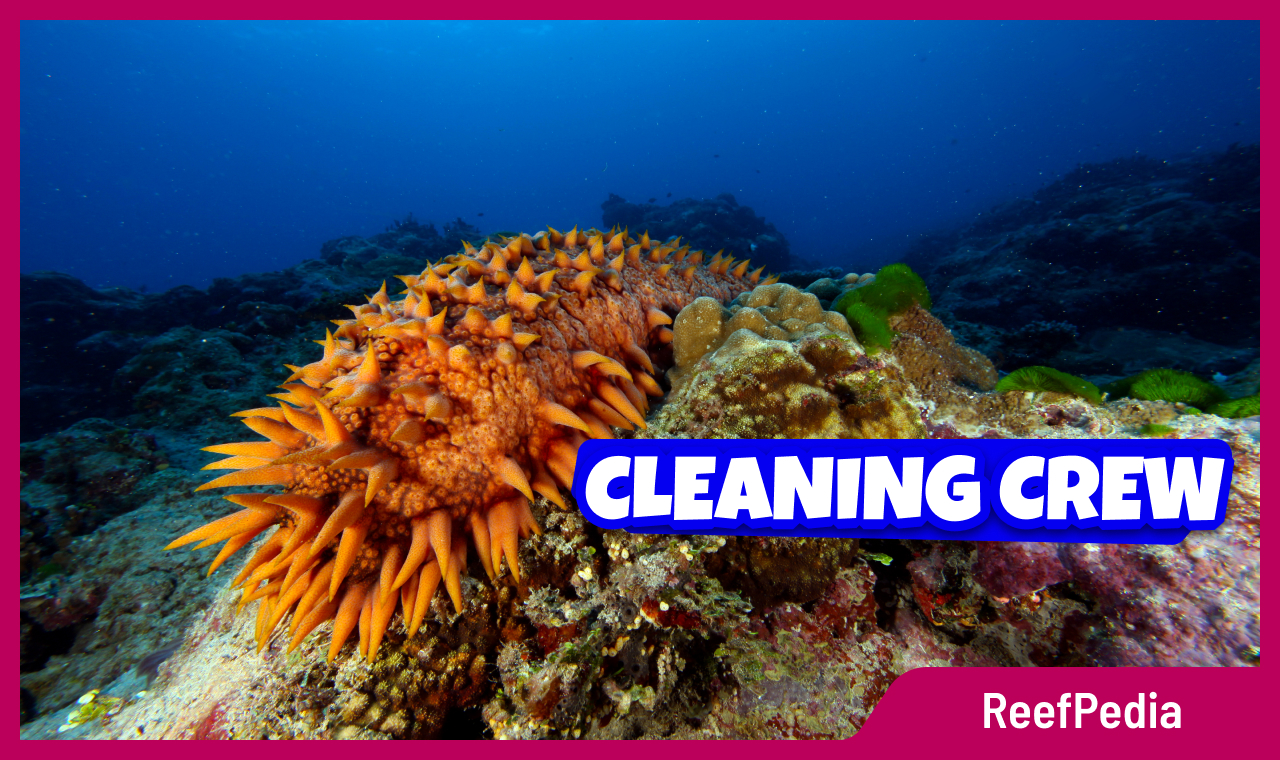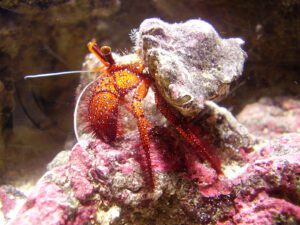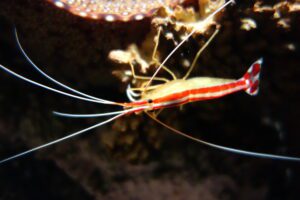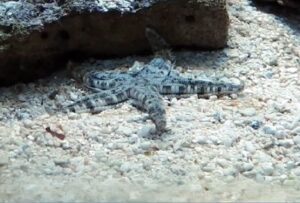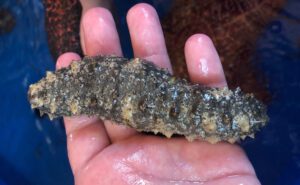Table of Contents
Definition and composition of the cleaning crew
The cleaning crew (Clean-Up Crew, CUC) in a marine aquarium consists of a variety of invertebrates that naturally help maintain cleanliness in the tank. Its main members are snails, crabs, shrimp, starfish, and other organisms that feed on food residues, detritus, and algae.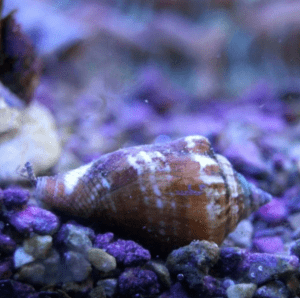
Functions of the cleaning crew
Members of the cleaning crew play a crucial role in the ecosystem of a marine aquarium by reducing algae growth, removing excess detritus, and stirring the sand to prevent the formation of anoxic zones. At the same time, they contribute to the maintenance of biological balance and aesthetics of the aquarium, which is equally important in closed ecosystems such as aquariums.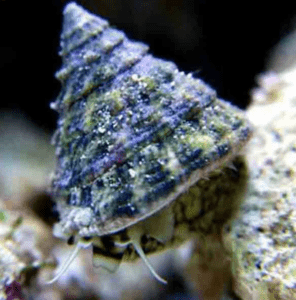
Timing of introduction to the aquarium
Introducing the cleaning crew to a marine aquarium is a key element in the maturation process of a newly established aquarium. To choose the best time to add these organisms, it is worth knowing that the aquarium goes through several stages of maturation before it reaches biological stability. The first animals from the cleaning crew should be introduced into the tank when the water and environment have already somewhat matured, which usually occurs at the end of this process.
This moment typically arrives after the levels of ammonia (NH3) and nitrites (NO2) have dropped to undetectable values, and the aquarium begins to show the first signs of algae growth, which signals that the ecosystem is starting to generate nutrients necessary for further development of life in the aquarium. Adding the cleaning crew at this time not only maintains the cleanliness of the tank and prevents problems such as sand clumping at the bottom but, above all, positively affects the stabilization of the biological balance.
Of course, the timing of introducing the cleaning crew to the aquarium can vary depending on the specific conditions prevailing in the particular tank, and the decision to introduce them should be carefully considered by the aquarist. It is crucial to monitor water parameters before introducing live organisms and to follow recommendations for acclimatizing new animals to the conditions in the aquarium. It is also important to ensure that when introducing a cleaning crew into the aquarium, there are algae present, which will be their primary food source.
Characteristics of selected organisms
- Snails – Snails such as Dolabella auricularia, Nassarius, Strombus luhuanus, Trochus, Tectus Fenestratus are excellent cleaners, moving across various surfaces and consuming algae and organic residues.

- Crabs – Hermit crabs such as Calcinus gaimardii, Clibanarius tricolor, Calcinus tibicen, and Mithraculus sculptus are popular members of the cleaning crew, effectively reducing algae in the aquarium, although they may show aggressive tendencies towards other organisms if there is a lack of food.

- Shrimp – Lysmata amboinensis is an example of a shrimp that not only cleans the aquarium of food residues but also helps maintain the health of fish by cleaning them of parasites.

- Sand Starfish (Astropecten polycanthus) – This starfish is valued for its ability to quickly remove detritus and excess food on the bottom. However, it should be noted that at the stage of maturing a young tank, the amount of detritus may be insufficient, thus the starfish may starve.

- Sea Cucumbers (Holothuroidea) – Usually feed by filtering detritus contained in the sand. Larger sea cucumbers require large amounts of nutrient-rich sand, which can be difficult to achieve in a standard reef aquarium. Small sea cucumbers, such as the several-centimeter-long Colochirus robustus, do well as filter feeders. However, it is worth noting that under stress, sea cucumbers can release toxins harmful to other aquarium inhabitants.

We should also remember that such organisms as polychaetes and asterinas, often considered undesirable by aquarists, are actually a free cleaning crew.
Summary
The cleaning crew is an essential element of every healthy marine aquarium due to the function they perform in marine tanks. It is important to remember that these organisms must be introduced to the tank at the right time so that they have something to clean. From experience, I know that in a newly established tank, the cleaning crew already allows us to observe living organisms before the next stage of introducing fish, making it a pleasant way to pass the time.
About the author

Grzegorz Bubak
My fascination with marine aquariums began over two decades ago when I stumbled upon an article about this topic in a magazine. Since then, the underwater world has become my obsession and passion, shaping my everyday life. I started my adventure with marine aquariums with soft corals, which were my first step into this fascinating world. Over time, captivated by the diversity and beauty of SPS corals, I decided to focus on their cultivation, which continues to fill me with constant wonder.
Thanks to my experience and passion for marine aquariums, I am ready to share my knowledge and expertise with other enthusiasts in this field. I am happy to be part of the Reef Pedia community, which serves as an invaluable source of information for all marine aquarium lovers.

